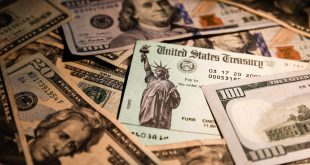Donald Trump’s threat to impose 60% tariffs on US imports of Chinese goods poses significant
growth risks for the world’s second-largest economy. The property market crisis, weak domestic demand, and deflationary pressures have contributed to China’s economic downturn. In 2018, the property market was strong, driving about a quarter of China’s economic activity. However, since 2021, real estate has been in a severe downturn, and local government revenues have plunged. This property sector’s downturn has saddled local governments with unsustainable debt, limiting China’s ability to respond to external growth shocks.
The International Monetary Fund calculates total government sector debt at 147 trillion yuan ($20.7 trillion) at the end of 2023, with household and corporate debt surpassing 350 trillion yuan, roughly three times the size of the economy. China’s household spending below 40% of GDP, about 20 percentage points behind the global average, requires either more debt or an overhaul of how national income is distributed, so that it benefits households at the expense of government and businesses.
China’s focus on upgrading the export-reliant manufacturing sector has led to tariffs in the United States, Europe, Turkey, and elsewhere. China may be able to boost external sales in areas where its economy is extremely competitive but has little control on external demand. Deflationary pressures have been fuelled by China’s policy of redirecting resources from the property market to the manufacturing sector, rather than consumers, which has led to factory gate deflation. Producer price inflation was 4.6% in July 2018 when Trump’s first tariffs came into effect. In September 2024, this stood at minus 2.8%. Consumer price inflation has ground to a paltry 0.4% from 2.1% over that period. Deflation, which hurts consumption, businesses, and growth, could get much worse if tariffs shrink external demand, exacerbating industrial overcapacity.
The yuan ended 2019 roughly 10% weaker against the dollar than in early 2018, when Washington flagged the tariffs plan and 4% weaker in trade-weighted terms against all currencies. The US curbs increased the effective tariff rate on all Chinese exports by 2.4 percentage points, according to Capital Economics analysts. This time, the yuan might have to fall 18% against the dollar to fully offset 60% US tariffs, implying a rate of 8.5 per dollar.
Trump’s victory in the race to become the next US president will have economic consequences for the rest of the world that are likely to be deep and quite immediate. Import duties, including a 10% universal tariff on imports from all foreign countries and a 60% tariff on imports from China, are a key plank of Trump’s policies and likely to have the biggest global impact.

 Noor Trends News, Technical Analysis, Educational Tools and Recommendations
Noor Trends News, Technical Analysis, Educational Tools and Recommendations




